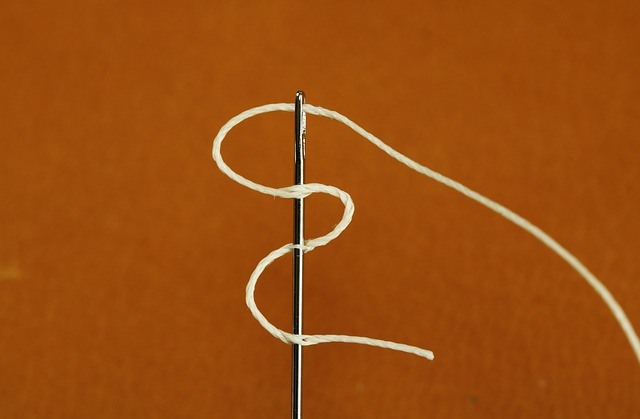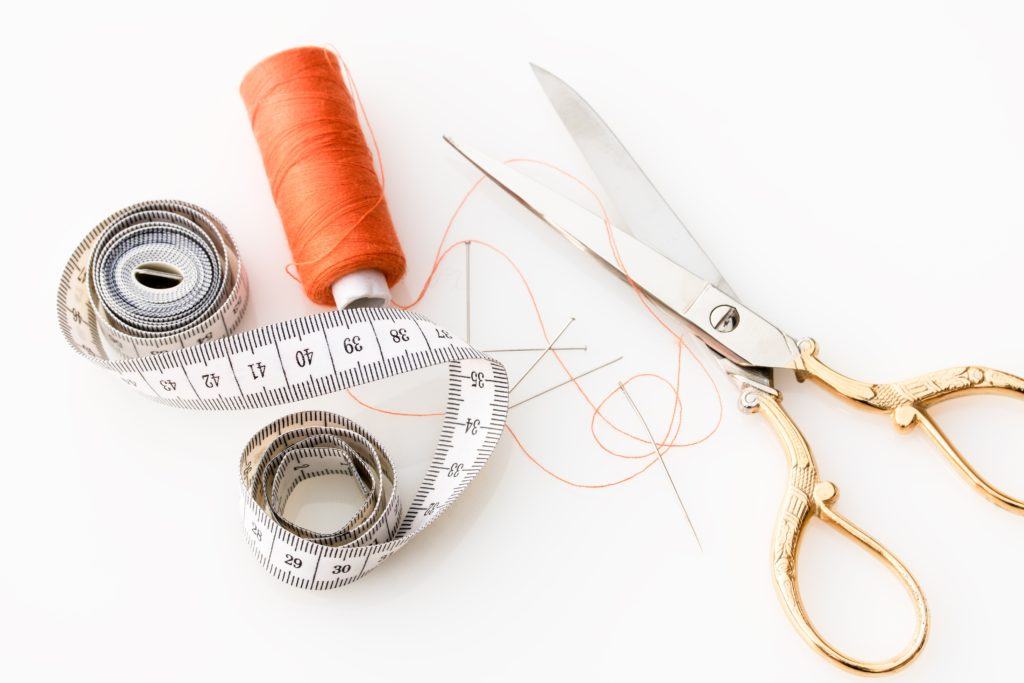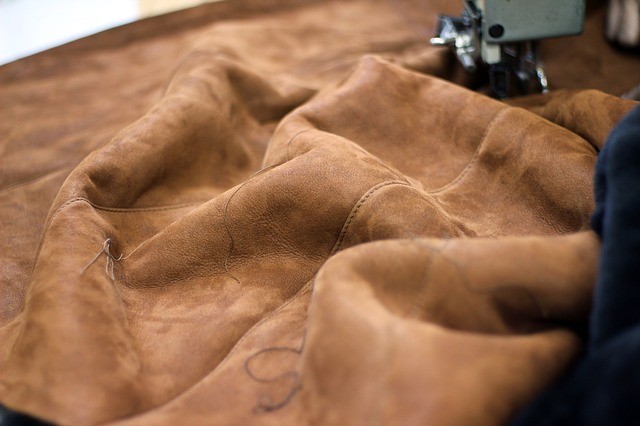What is topstitching and how does it differ from straight stitching? Topstitching parallels straight stitching in its practical purpose, true, but it is also stitching that is explicitly meant to be seen.
Oftentimes topstitching is deliberately decorative; while we’ll discuss a much more basic top stitch here, some topstitching can draw the eye as effectively as the whole of a completed project.

Also worth noting is the directional placement of topstitching. Topstitching is viewable primarily from a project’s right side, as it holds fabric together and serves as one of a project’s final touches.
One row of topstitching may be available, but there may also be several rows set into the fabric for both practical and decorative purposes.
When learning how to topstitch, it’s important to ensure that these two elements, purpose and design, come together so that your final project can be as elegant as you desire.
Topstitching and Your Work
There is no limit to the number of projects you can use topstitching on – and that’s no exaggeration. You can use a top stitch on a handbag, an apron, a pair of jeans, or a stuffed animal.
If you’re looking for examples, take a look through your closet. Your jeans will be the most obvious source of topstitching, but be sure to peruse your sweaters, socks, or a handbag. You might be surprised (and inspired) by the things you find!
Topstitching Materials
- Thread.
- Needle.
- Chalk (optional).
- Thimble (optional).
- Sewing machine (optional).
- Seam ripper.
- Iron.
- Ironing board.
When preparing to try topstitch sewing on any of your projects, you will need to ensure that you have the right kind of materials available.
Determine ahead of time whether you want to try topstitching by hand or if you would prefer to use your sewing machine to get to work. Either way, it’s up to you to determine what kind of needles or thread you want to bring into your project.
Ideal topstitching thread is thread that matches the needs of your project, both in aesthetic appeal and in strength. You may, though, want to work with thread that’s a little heavier than what you normally use.
When determining how to decorate your latest project, keep an eye out for “topstitching thread,” as marketed by different craft stores, and test the feel of it against the thread you normally work with.
You may wish to deviate from your normal needle while topstitching, though the change isn’t necessary. It is worth noting, though, that your project will be inside out, so having a needle on hand that you’re familiar with, especially if you’re sewing by hand, can be helpful.

It is also advised that you have an iron on hand before you begin topstitching! Take care to press your fabric and secure it to the surface you’re sewing on, so as to prevent any mishaps in your work.
How to Topstitch with a Sewing Machine
It’s up to you whether or not you topstitch with a sewing machine or if you do the work by hand. A topstitch sewing machine, though, will shorten the amount of time you spend on your project.
Before you get started, take care to ensure that your project is flipped inside out; you can right the project as soon as your topstitching is done.
Beginning
Determine, before starting anything else, where you want your topstitching to begin appearing.
This design element can impact the whole of your project, and you’ll need to plan your pattern in advance in order to ensure that it comes out as cleanly as possible.
Finding Your Feet
Attach your edge stitch foot to your sewing machine, taking care to de-center your needle before you begin sewing. This will enable you to keep a better eye on your work as you’re doing it.
Pop and Lock
If you aren’t sure what kind of stitch you want to use over the course of your topstitching, you can safely choose either the straight stitch or the locking stitch.
A triple stitch is also a fine stitch for topstitching, so long as it’s a stitch available to you on your sewing machine.
Getting to Work
With your design determined, your sewing foot set, and your stitching in place, all that remains is for you to begin sewing!
Take your time if you’re new to topstitching, and keep an eye on your work, but enjoy yourself throughout the learning process.
Here’s a video showing how to topstitch with a sewing machine.
How to Topstitch by Hand
Topstitching by hand may take a bit more time. If you find the work gratifying, though, why not pursue it?
The process is, in some ways, is quite similar to the process of topstitching with a sewing machine.
Again, before you get started, take care to ensure that your project is flipped inside out; you can right the project as soon as your topstitching is done.
Beginning
As previously stated, take care to have the design of your topstitching planned out ahead of time.
Mark where you’d like to begin the stitches on your project with chalk, in order to make your work a little easier.
Preparation
Thread your needle and tie it off to prevent any slippage, mid-project.
Sewing from Beneath
Press your needle against your preferred starting point, preparing to push up from the underside of the fabric.
Once you feel settled, thread through the fabric.
Re-Stitching
Moving from the top down, stitch through the same hole you just created, taking care to pull your thread all the way through the fabric.

Moving
From the underside of the fabric, move your needle one stitch length forward. Thread up through the fabric again, and you’ll have started your line of topstitching.
Repeat
Continue with this process until your line of stitching is complete.
Do you have any topstitching tips?
